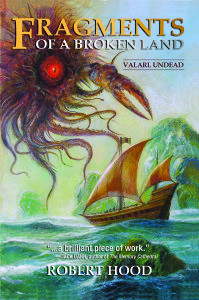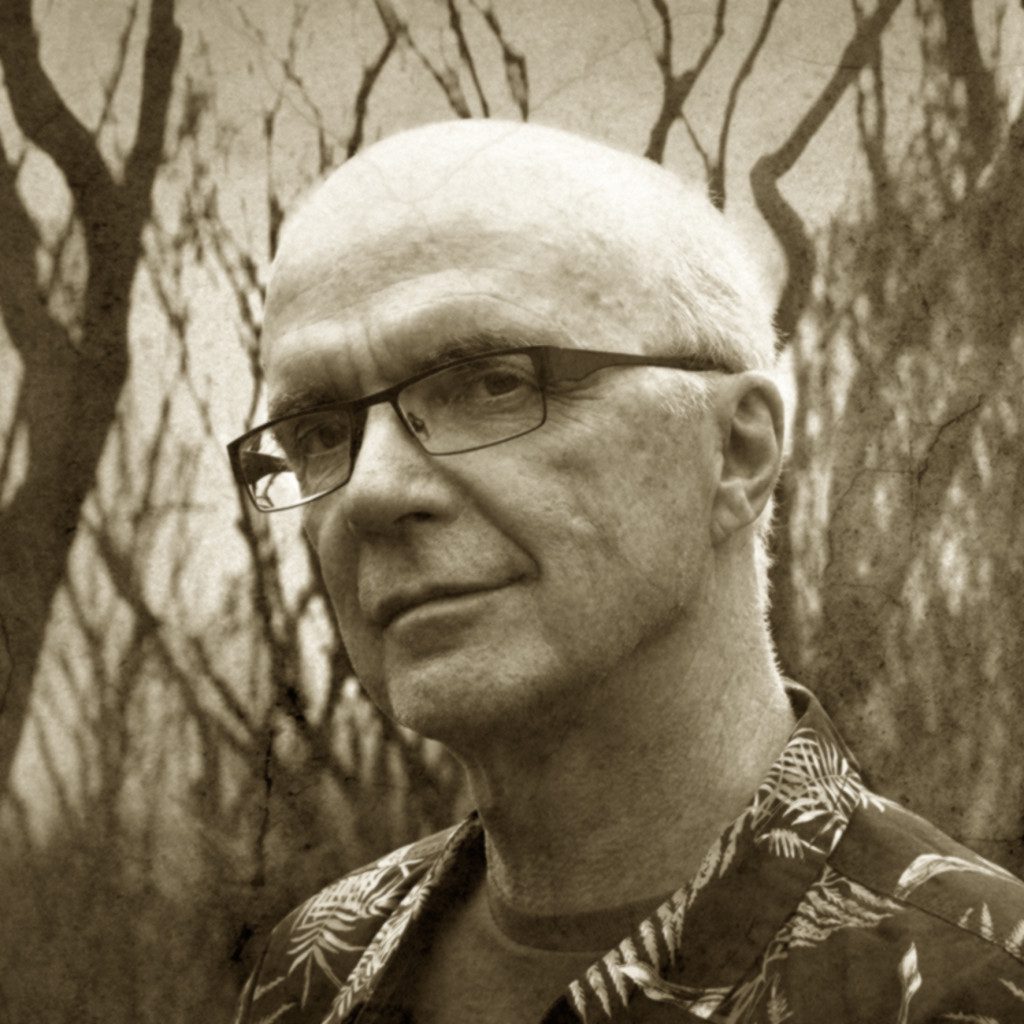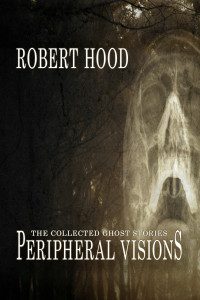Australian author Robert Hood’s long career in the fantasy/horror/SF/crime genres has produced over 160 stories, many of them re-printed in his four collections, the most recent being Peripheral Visions: The Collected Ghost Stories (IFWG Publishing Australia, 2015). His novels include Backstreets, the supernatural YA Shades series, and an epic dark fantasy novel, Fragments of a Broken Land: Valarl Undead (Borgo/Wildside Press), which won the 2014 Ditmar Award for Best Novel. Hood’s website can be found at www.roberthood.net and www.roberthoodwriter.com.

From an early age I was drawn to and fascinated by fantastic and weird fiction of all kinds – the genres we group together as “speculative fiction” these days. Initially my energies were put into writing both science fiction and weird fiction, but I was only 13 or 14 then, and though my stories were regarded highly by teachers they were rather derivative and not very good. At some point, as I read more and my reading veered towards dark fiction and the terminally strange, I began to think that writing science fiction required greater scientific knowledge that I had. At the same time I came to believe that there was considerable flexibility in the horror genre that allowed experimentation with form and language to a degree that was more restricted in the other genres. Whether this was true or not, by the time I was writing fiction seriously, horror was my main focus. Mary Shelley’s Frankenstein and Stoker’s Dracula – not to forget anthologies such as The Pan Book of Horror Stories – had sucked me in. I think the tropes of horror fiction are the ones to which my imagination naturally gravitates. Though I didn’t articulate it then, I’ve always thought that monsters provide some of the strongest metaphors in literature. I still write science fiction and some crime fiction, and recently published an epic fantasy novel called Fragments of a Broken Land: Valarl Undead through Wildside Press (which won the Australian Ditmar Award for Best Novel of 2014). Yet most of my fiction is either in one of the sub-categories of horror fiction or is at least rather dark in theme, atmosphere and imagery.
What is your most notable work?
Earlier this year IFWG Publishing – an Australian small-press – produced a commissioned collection of my ghost stories, a magnificent volume that includes every published story of mine written since 1986 that can be considered to lie within that subgenre. Peripheral Visions: The Collected Ghost Stories includes 44 stories, three of them, including a 22,000-word novella, newly written especially for the book. At 826 pages, available as a single-volume hardcover (with artwork provided by award-winning artist Nick Stathopoulos), a deluxe edition of same, a two-volume TPB and an ebook, and including notes on each story, an intro by World Fantasy Award-winning editor, Danel Olson, and a full bibliography, I can’t help but feel that Peripheral Visions is my most notable book to date, if not my best. It’s the sort of volume a writer usually gets once they’re dead, though most of the evidence points toward the possibility that I’m still alive. It’s also worth noting that in conjunction with the book, IFWG has produced a chapbook of my zombie stories titled Haunted Flesh: Stories of the Living Dead.
Several horror/SF short stories are underway, but I am working to do a final major edit on a crime-thriller/horror novel titled Scavengers, as well as completing the first draft of a straight-out horror novel with the working title Dead Matter. Both have been long in the making.
How much planning and research do you undertake before writing?
It varies. I have noticed that my stories seem to be taking longer to write as the years go by, getting generally longer in wordage as well, and are more ambitious than they used to be. By the same token, more research is required as I push out of my familiar comfort zone. I’m not a meticulous planner when it comes to writing. I find that attempts to work out the story ahead of writing it tend to lead to boredom and a much flatter imaginative landscape. I’m more inventive if I start from some initial idea/concept/image/character and see where it leads me. It’s a messy and possibly wasteful way of writing, but, like evolution, produces some amazing and unexpected results.
Describe your writing routine.
Get out of bed. Feed and pat the cat. Check email/Facebook messages. Have breakfast, shower and get dressed. Procrastinate over interviews, publicity requests, blog posts and general business demands. Open file for current work-in-progress. Read over previous day’s writing and tweak it. Write as much or as little of the ongoing story as possible, time spent on it depending on deadlines and current depth of involvement. Check mail. Pat cat. Have lunch while watching cartoons, an episode of Monty Python’s Flying Circus or something similar. Write some more. Read a book, either fiction or reference (if research for current story is needed). Write some more (by now, the intensity of the effort made depends on deadlines etc.). Shoo the cat off the keyboard after patting. Maybe go for a walk. Write a bit more (or less, if diminishing returns become evident). Feed and pat the cat because he’s whinging at me. Re-read the day’s wordage. Read more of a book or listen to music. Have dinner. Watch some TV shows or a movie (for research purposes, of course). Sleep. Toss about in the early morning as plots, characters and story ideas swirl about in my head. Repeat from start. – Somewhere amongst all this there will be interaction with my partner, writer Cat Sparks (who works down the opposite end of the house), grocery shopping, visiting aging parents, paying bills, mowing the lawn (rarely), doing the dishes etc. etc. – all that real-life stuff. Occasionally everything but the writing will shrivel to an almost invisible annoyance, if there’s a looming deadline or inspiration takes over… not the cat feeding and patting though. That continues as always, as it must.
Who do you admire in the horror world?
There are a slew of women writers in Australia whose work is at the forefront of the field here – Kaaron Warren, Angela Slatter, Margo Lanagon, to name a few. Their work has been inspiring, often confronting and always well-written, and should have laid to rest the old saw that women can’t write horror or dark fantasy, if it hasn’t already be dismissed long before. In film, I admire the work of Japanese director/writer Kiyoshi Kurosawa, who is one of the few horror filmmakers who have managed to scare the crap out of me. I also admire the work of US editor Danel Olson, whose Exotic Gothic anthologies have included superb work by writers worldwide, including my own. Somehow he got me to write some of my best work – and I know it was his insightful approach to the task that did it.
Do you prefer all-out gore or psychological chills?
I’ve written all-out gore. In fact, a somewhat inventive but “gratuitously gory” story of mine, ‘Autopsy’, once contributed to a magazine was slapped with an R-rating and banned in Queensland. Some of my stories get dark and nasty. But nastiness is easy. The most effective stories (of mine and other people) are, I think, more psychologically chilling, where the author builds an atmosphere of escalating unease and uncertainty, and horrifies the reader by implication rather than overt violence and bloodshed. Comic-level gore dulls the reader’s responses in the end; a build-up of emotions, horrific ideas and creepy moments linger in the mind. I always hope to give the reader a moment of dark epiphany – though it’s hard to do and even harder to know if you’ve succeeded (unless the reader tells you so).
Why should people read your work?
They should read my work if they enjoy darkly entertaining stories that explore the emotions that haunt humanity and give form to our lives and our societies, offering metaphysical speculation through real-world characters while being engaging, imaginative, varied in tone, and well-written. That’s what I aim for anyway. I’m told my stories get very weird and even somewhat threatening at times – a magazine article once described me as “Aussie horror’s wicked godfather”, and one review of a particularly weird novella referred to it as “page after page of undiluted awesomeness all over the board.” I can live with either of those epitaphs…
Recommend a book.
I just read David Mitchell’s epic novel The Bone Clocks. Not horror as such, but certainly weird, beginning with naturalistic intimacy then smoothly and patiently escalating his plot toward a full-on strangeness that never becomes totally divorced from reality. His skill at capturing the distinctive voices of several complex point-of-view characters, his superb attention to detail and the scope of his imagination make this book, for me, an instant classic. If I can recommend a recent book that does many of these things in short story form, but is definitely in the horror genre, it would be Kaaron Warren’s The Gate Theory (Cohesion Press) – stories that are in turn creepy, bizarre, poignant and gut-wrenching – definitely humanity on the edge.


